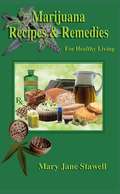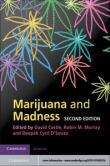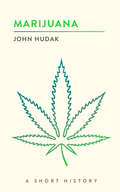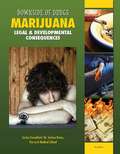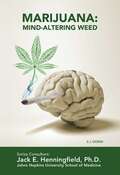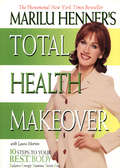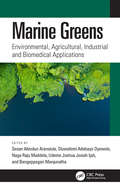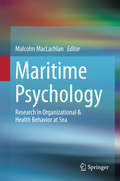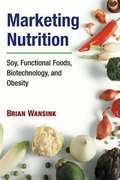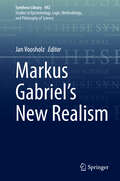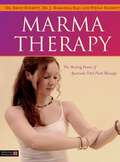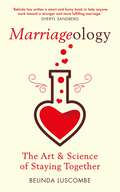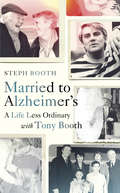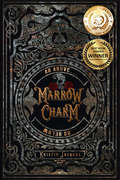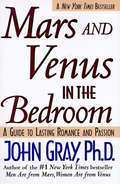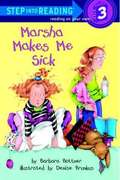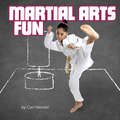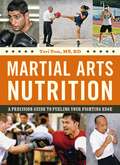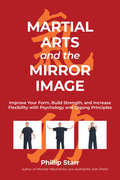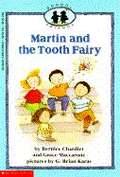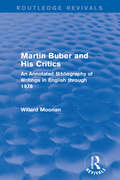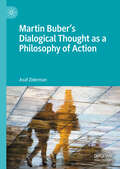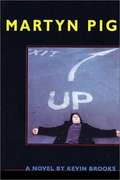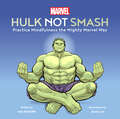- Table View
- List View
Marijuana Recipes and Remedies for Healthy Living
by Mary Jane StawellMarijuana is a palliative, an analgesic with anti-inflammatory properties --it alleviates pain without addictive effects experienced with narcotics. You might think of marijuana as being something like an herbal aspirin. <P><P>In fact, it was used in folk medicines like aspirin for thousands of years to soothe aches and pains before aspirin was discovered. When hearing marijuana most of us call up an image of recreational smoking to "get high". Being in the high-state actually promotes wellness. Being high feels good and feeling good encourages healing and homeostasis.Most of us, however, are less familiar with the other ways in which one can use marijuana as a remedy for aliments that diminish quality of life-like aching muscles from over exertion or spinal misalignment, for example. Actually the list of aliments that can be soothed with medical marijuana is quite long. It is important to emphasize that marijuana does not "cure"; rather it soothes and alleviates and in so doing we feel better and heal faster. This comes from its palliative qualities.Marijuana's palliative qualities can be delivered in a variety of ways: smoking, eating, rubbing into the skin. Each of these delivery methods has special benefits, which are compared and contrasted in MARIJUANA RECIPES AND REMEDIES. In addition to the delicious foods described, MARIJUANA RECIPES AND REMEDIES tells how to extract the beneficial chemicals from the herb-its essence-to make tinctures and ointments good for massaging aching muscles, soothing bug bites.MARIJUANA RECIPES AND REMEDIES offers many easy, delicious, nutritious recipes, including desserts of all kinds, breads, main courses, and elixirs. It also teaches principles-such as using butter to extract the essence-so that you can experiment with your own recipe development. What fun!Most cookbooks tell you how to cook "from scratch", which is great if you're a cook and you have enough time. But many us aren't "cooks"-yet we would like to incorporate marijuana herbals in our menu. MARIJUANA RECIPES AND REMEDIES is unique in that it shows how to use inexpensive, off-the-shelf, ready-made mixes you can find at the corner store to make some fabulous cannabis cuisine. How to convert off-the-shelf lotions into something fit for Cleopatra-well, almost!
Marijuana and Madness
by David Castle Sir Robin M. Murray Deepak Cyril D'SouzaThe second edition of this critically acclaimed and award-winning text provides a comprehensive overview of the psychiatry and neuroscience of Cannabis sativa (marijuana). It outlines the very latest developments in our understanding of the human cannabinoid system, and links this knowledge to clinical and epidemiological facts about the impact of cannabis on mental health. Clinically focused chapters review not only the direct psychomimetic properties of cannabis, but also the impact consumption has on the courses of evolving or established mental illnesses such as schizophrenia. Effects of cannabis on mood are reviewed, as are its effects on cognition. This new edition has been extensively updated and expanded with 10 new chapters to incorporate major new research findings. This book will be of interest to all members of the mental health team, as well as to neuroscientists, epidemiologists, public health specialists and those involved in drug and alcohol research.
Marijuana: A Short History
by John HudakFrom Reefer Madness to legal purchase at the corner store.With long-time legal and social barriers to marijuana falling across much of the United States, the time has come for an accessible and informative look at attitudes toward the dried byproduct of Cannabis sativa. Marijuana: A Short History profiles the politics and policies concerning the five-leaf plant in the United States and around the world.Millions of Americans have used marijuana at some point in their lives, yet it remains a substance shrouded by myth, misinformation, and mystery. This book offers an up-to-date, cutting-edge look at how a plant with a tumultuous history has emerged from the shadows of counterculture and illegality. Today, marijuana has become a remarkable social, economic, and even political force, with a surprising range of advocates and opponents. Public policy toward marijuana, especially in the United States, is changing rapidly. Marijuana: A Short History provides a brief yet compelling narrative that discusses the social and cultural history of marijuana but also tells us how a once-vilified plant has been transformed into a serious, even mainstream, public policy issue. Focusing on politics, the media, government, and education, the book describes why public policy has changed, and what that change might mean for marijuana's future place in society.
Marijuana: Legal & Developmental Consequences
by Rosa WatersYou may have heard that marijuana is a "safe" drug. In some parts of the United States, it's even legal and while a debate continues regarding recreational and medical use, research still conclusively confirms the devastating effect on a young, undeveloped adolescent brain. Using marijuana can have very real and very scary consequences for your body and your future. Discover the true dangers of using marijuana. Find out how marijuana can hurt your relationships with the people you love and keep you from doing your best in school. Learn the downside of marijuana!
Marijuana: Mind-Altering Weed (Illicit and Misused Drugs)
by E. J. SannaMarijuana. It's been called a gateway drug, an introduction to the world of harder illegal drugs. Yet many people consider it to be a safe drug--at least safer than heroin, LSD, or cocaine. However, while marijuana might not be directly responsible for causing any deaths, the consequences of its use can be detrimental to the lives of its users. This book describes the history of marijuana use, the dangers of its use, and the legal consequences. You'll also learn about the controversies surrounding the drug--including the issues of decriminalization and the use of medical marijuana. Treatment options for marijuana dependency are also discussed
Marilu Henner's Total Health Makeover
by Marilu HennerWhen Was The Last Time You Felt Really Healthy?Now's the time to create the healthy, balanced life you want -- and become the truly vibrant, happy person you were meant to be. Combining good humor with solid science, Marilu Henner provides essential information on every aspect of health and fitness, including:Detoxing your bodyPreventing or alleviating health conditions from obesity to cancerThe secrets of stress reductionReal food and the organic way to fuel your bodyFree yourself forever from diets and disease-causing toxins, boost your energy, lower and maintain your weight -- and change your life.
Marine Greens: Environmental, Agricultural, Industrial and Biomedical Applications
by Sesan Abiodun Aransiola, Oluwafemi Adebayo Oyewole, Naga Raju Maddela, Udeme Joshua Josiah Ijah, and Bangeppagari ManjunathaThis book provides an in-depth overview of marine greens and their environmental and biotechnological applications. It addresses concepts such as the niche adaptation strategies of marine greens in their natural habitats, as well as their global distribution, and factors affecting their distribution and proliferation.Marine greens are posited as an alternative to fossil fuels, mitigating global climate change and thereby fostering future environmental sustainability. In addition, the book explains the remediation of xenobiotics, wastewater, microplastics, marine debris and marine green contamination. Expert authors from around the world explore the industrial and agricultural applications of marine greens in the production of enzymes and marine bioenergy, and what is needed to improve its production potential.This is important reading for government and non-governmental organizations as well as industries and research institutions looking for ways to combat current industrial and environmental challenges.
Maritime Psychology
by Malcolm MaclachlanThis first-of-its-kind volume assembles current research on psychosocial issues and behavioral and safety concerns inherent in life and careers at sea. Focusing mainly on the commercial maritime transport sector, it sets out the basic concepts of maritime psychology in the contexts of health and occupational psychology and illustrates more expansive applications across nautical domains. A systems perspective and detailed case studies spotlight unique challenges to mariners' work performance, personal and environmental health and safety; it also provides support for psychometric assessment of seafarers, and describes emerging uses for the healing properties of the sea and sailing. The book is a springboard for continued research and practice development, further interaction between psychology and the maritime world, and the continued broadening and deepening of the field. Among the topics covered: #65533; Positive psychology and wellbeing at sea. #65533; Transferring learning across safety critical industries. #65533; Occupational stress in seafarers. #65533; The psychology of ship architecture and design. #65533; Motion sickness susceptibility and management at sea. #65533; Risk communication during a maritime disaster. Written with clarity and nuance reflecting the vastness of marine experience, Maritime Psychology will be of interest to lecturers, researchers, and students of occupational and health psychology and maritime science, and to social and health scientists and practitioners in these and related fields.
Marketing Nutrition: Soy, Functional Foods, Biotechnology, and Obesity
by Brian WansinkAlthough encouraging people to eat more nutritiously can promote better health, most efforts by companies, health professionals, and even parents are disappointingly ineffective. Brian Wansink's Marketing Nutrition focuses on why people eat the foods they do, and what can be done to improve their nutrition. Wansink argues that the true challenge in marketing nutrition lies in leveraging new tools of consumer psychology (which he specifically demonstrates) and by applying lessons from other products' failures and successes. The key problem with marketing nutrition remains, after all, marketing.
Markus Gabriel’s New Realism (Synthese Library #492)
by Jan VoosholzThis is the first volume focused on Markus Gabriel’s version of New Realism, which spans the fields of metaphysics/ontology, philosophy of mind, epistemology, philosophy of science, and meta-philosophy. Most of the selected contributions are directly or indirectly concerned with Gabriel’s fields of sense-ontology, his version of a thoroughly realistic pluralism. While some take up criticisms from previous debates surrounding Gabriel’s philosophy and New Realism in general, others advance completely new and innovative challenges for this highly systematic thinker. Overall, the contributions provide both a substantive commentary on Gabriel’s work and a multifaceted, critical assessment of its underlying ideas. The book is not only an essential addition to the debate surrounding New Realism, but also furthers the discussions about naturalism, deflationist ontologies, contextualism and mereological arguments to which Gabriel’s work has contributed in recent years.
Marma Therapy: The Healing Power of Ayurvedic Vital Point Massage
by Stefan Schrott Dr J. Ramanuja Raju Marek Lorys Dr Ernst SchrottThe effective yet gentle 'Sukshma' technique, for working with the Marma points at the emotional as well as on the physical level, is fully described in this book. Marma Therapy - the art of treating specific vital points on the human body - is one of the greatest healing secrets of Ayurveda. It can be used to detoxify, strengthen and revitalize the body, for rejuvenation and relaxation or to release blocked energy. The authors explain the theoretical basis of Marma Therapy, and then provide a detailed, fully illustrated guide to its use. For each Marma point, the authors provide information about its significance, the Ayurvedic element it relates to, the most appropriate oils to use, and what it can be used to treat. Clear step-by-step instructions and photographs illustrate the techniques, and advice is also included for self-treatment. The authors explain how to strengthen the Marmas through yoga and use mudras to support and complement Marma treatment. Finally, they describe how to treat common physical and emotional conditions, from headache and back pain, to exam nerves and insomnia.
Marriageology: The Art and Science of Staying Together
by Belinda LuscombeThe fault lines that can fracture a marriage are all contained in these six words: FAMILIARITY, FIGHTING, FAMILY, FINANCES, FOOLING AROUND AND FINDING HELP. It&’s time to get to know your F words. Using the latest scientific research, personal anecdotes and expert advice, award-winning journalist Belinda Luscombe argues that marriage is good for your health, your finances and your happiness. But it isn&’t always easy! Focusing on what Belinda describes as her F words, she presents facts, debunks myths, and provides an entertaining mix of data, anecdotes and wisdom from a wide range of approaches to married life, drawing on the work of experts from within the marriage and divorce industries. A brilliant guide to staying together, Marriageology offers helpful advice and gives readers something to think about whether your marriage is on the brink of collapse or just needs a bit of maintenance.
Married to Alzheimer's: A Life Less Ordinary with Tony Booth
by Steph BoothEXTRAORDINARY MEMOIR OF A LIFE AND LOVE TORN APART BY DEMENTIAWhen her husband Tony was diagnosed with Alzheimer’s in 2004, Steph Booth had to say goodbye to life as she knew it. The disease encroached into their lives, taking away Tony day by day. Open and honest, but with heart and warmth, Steph reveals and the hardship of caring for Tony and losing herself in the midst of it. Along the way we learn of the people they were, the dynamics of their relationship – Tony’s theatrics, Steph’s stubbornness – effortlessly captured with lightness and humour. Borne out of her much-loved Irish Times column, Married to Alzheimer’s is a poignant account of a life and love torn apart by dementia and a bond that was unshakeable. Tony was never a conformist. An actor, rebel, raconteur. The frustration, the grief, the laughter, the anger, the joy meant life with him was anything but ordinary.
Marrow Charm (The Gate Cycle #1)
by Kristin JacquesWatty Award-Winning NovelAzure Brimvine lives in a world decimated by magic. One where humans have retreated underground from the overwhelming dangers of the surface. But Below is no safer than Above. Magic borne plagues continue to eat away at the remaining human cities. A sickness that doesn't merely kill, but creates aberrations from the stricken: people twisted by magic into something dark, dangerous, and powerful. But when Azzy's brother, Armin, is infected and cast out into the Above, she sets out after him, determined to be there for him no matter what he becomes. The world Above is full of monsters, both wild and cunning, some more human than Azzy was led to believe. Her search for Armin leads her to Avergard, a ruthless city of inhuman lords and twisted creatures. Azzy must find allies and forge new bonds in this broken world, brave the perils of the Above, and reach Armin before his new power is used to open the Gate once more.
Mars and Venus in the Bedroom
by John GrayCan you keep the fires of passion burning?Men and women have very different physical needs. But Dr. John Gray explains how both can make small but important adjustments in their attitudes, schedules, and techniques so that their partners are happy in the bedroom -- and outside of it.Written with the understanding and unique insight that can come only from Dr. Gray, Mars and Venus in the Bedroom educate men and women on:Advanced bedroom skills for great sexThe joys of quickiesWhy couples are having less sexPassionate monogamySexual anatomy and oral sexHow to keep the magic of romance aliveAnd much more
Marsha Makes Me Sick
by Barbara BottnerIn this hilarious tale of sibling rivalry, Lulu, the "poor" neglected older child, tries to get her mom's attention, as the latter tries to attend to Lulu's sick younger sister, Marsha.
Martial Arts Fun (Sports Fun)
by Cari MeisterMartial Arts are thrilling to watch, but they’re even more fun to do! Kids can take part in the sport by learning what martial arts are, what gear and skills are needed, what happens during lessons, and how to be a good sport. A skill-building activity helps kids participate in the fun.
Martial Arts Nutrition: A Precision Guide to Fueling Your Fighting Edge
by Teri TomLearn nutrition secrets from Teri Tom, dietitian to popular fighters such as boxing's Manny Pacquiao and Amir Khan, and MMA's Andrei Arlovski!<P><P>In the martial arts and combat sports, it's important--and sometimes a matter of life and death--not to have any weak links in your fighting arsenal. The same principle applies to your approach to nutrition and fitness. Train and fuel yourself methodically, and you can't miss, as registered dietitian and trainer Teri Tom details here.Your conditioning, your training regimen, and your body are in a constant state of change...and your nutrition approach must vary according to give you exactly what you need, when you need it. Whether your goal is weight loss, to build muscle, or break through a plateau, here are the nutrition techniques to prepare you for any scenario.Teri Tom,MS, RD, a registered dietitian, strength and conditioning coach, and leading authority on Bruce Lee's Jeet Kune Do, explains exactly how the nutrients you consume impact your martial arts performance--and sometimes in ways you might not expect. No stranger to the challenges of competition, she guides you in choosing the best nutrition techniques to achieve your martial arts goals.
Martial Arts and the Mirror Image: Improve Your Form, Build Strength, and Increase Flexibility with Psychology and Qigong Principles
by Phillip StarrA groundbreaking approach to martial arts combining Self-Image Psychology and Qigong.Martial arts teacher Phillip Starr draws on more than sixty years of experience to introduce the Mirror Image Technique--a method that recognizes the reinforcing nature of body and mind. Our self-image expresses in how we stand, move, and hold ourselves in the world; and in martial arts, the way we move reflects the way we think on the mat, in practice, and when sparring.Here, Starr pulls from Self-Image Psychology and Qigong to offer readers a unique set of physical exercises that can be applied to any martial art tradition--as well as our personal lives. Like two mirrors facing each other, the physical body both reflects and changes the mind, and vice versa: our physical movements become more than just the consequence of our intentions or thoughts. As we adjust the way we move, we adjust the way we think: about ourselves, our lives, and our environments.Unlike other self-help books that consider the mind as the sole gateway to change, the Mirror Image Technique shows that cognitive transformation starts with the body. Starr takes readers through: • Demonstrating key principles of Qigong with exercises like The Unbreakable Arm and The Unliftable Body • Improving your stance • Increasing your strike force • Insights into the mindset for breaking boards (tameshiwari).Intended to enhance growth and personal development, the techniques in Martial Arts and the Mirror Image lead to a renewal of confidence and enthusiasm for one&’s particular practice.
Martin And The Tooth Fairy
by Grace Maccarone Bernice Chardiet G. Brian KarasWhen Martin receives more money from the Tooth Fairy than his friends at school, he offers to put their teeth under his pillow for a percentage of the profits.
Martin Buber and His Critics (Routledge Revivals): An Annotated Bibliography of Writings in English through 1978
by Willard MoonanFirst published in 1981. Martin Buber has been acclaimed as one of the major philosophical and religious thinkers of the twentieth century with his influence and achievements spanning numerous fields — however in each of these areas his work has also been severely criticised and his influence called into question. This volume brings together in a systematic arrangement all the significant material by and about Martin Buber published in English up to the centenary of his birth in 1978. To make the bibliography as useful as possible, the critical material was annotated and various indexes were constructed, including an extensive subject index to both Buber’s works and the criticism.
Martin Buber's Dialogical Thought as a Philosophy of Action
by Asaf ZidermanThe Act of Love promotes a philosophical revival of Buber’s dialogical thought by repositioning it as a philosophy of action, departing from a long-established consensus that narrowly viewed it as a post-Kantian epistemology. Based on careful analysis of his writings, the book’s main thrust is to reconstruct Buber’s argument that dialogue is the perfected form of action, and a perfect action is necessarily dialogical. This reconstruction renders Buber's dialogical thought pertinent to contemporary analytic philosophy by situating it within central discussions in the field of philosophy of action.
Martin Speaks Out On The Cults
by Walter MartinThis book has been used by Christians to equip them to share their faith effectively with cultists and to win those lost souls for the kingdom of God cultists have read this book and it will challenge them to investigate the claims of the true Jesus Christ of the Bible and to abandon the false Christ's of the cults.
Martyn Pig
by Kevin BrooksMeet Martyn Pig, a boy with a terrible name, trapped in a terrible life. Justwhen he thinks things can't get any worse, his father is accidentally killed, setting off a horrific chain of events.
Marvel Hulk Not Smash: Practice Mindfulness the Mighty Marvel Way (Marvel)
by Amy Ratcliffe"Be in the now."—Hawkeye An illustrated, accessible guide to mindfulness that explores life-improving lessons we can learn from Marvel comics characters as they face tests of perseverance, focus, community, and strength beyond just the physical.Life is full of choices. Like the Hulk, we can smash or choose not to. We can practice flexibility like Mister Fantastic, trust our team like Rocket Racoon, problem-solve like Shuri, and develop awareness like Doctor Strange. Grounded in character and story events drawn from the comics, this inspirational collection pairs Marvel heroes with helpful real-life advice and mindfulness guidance in a light and accessible way.Each entry presents a character spotlight with a way of appreciating their example, a related practice that readers can put into action, and a playful illustration by acclaimed comics artist Jason Loo. Featuring Hawkeye (deep focus), Groot (being who you are), Spider-Man (the gift and obligation of responsibility), Ms. Marvel, She-Hulk, Captain America, Shang-Chi, and dozens more, Hulk Not Smash makes it easy and fun for fans to incorporate these lessons into their lives.© 2024 MARVELFUN AND ACCESSIBLE: Amy Ratcliffe (author of The Jedi Mind: Secrets from the Force for Balance and Peace) gently demystifies the concept of mindfulness and makes it playfully accessible, rooted as it is in Marvel character examples. Anyone can put these lessons into practice. REAL MINDFULNESS GUIDANCE: Each practice is thoughtfully paired with an illuminating character and rooted in tried and true actions and mindsets that can bring peace, including breathing exercises, paying attention to the present, examining fears, concentration, labeling feelings, nonjudgement, stretching, examining routines, and much more. UNIQUE MARVEL GIFT: For fans of Marvel, this one-of-a-kind mindfulness book offers wide-ranging lessons and character studies to draw inspiration from, including:Ant-Man (Sense of Scale)Beast (Don’t Judge a Book by Its Cover)Black Widow (Being Prepared)Black Panther (Leadership)Mantis (Emotion Identification)Professor X (Radical Empathy)Scarlet Witch (Accepting Reality)Silver Surfer (Putting Your Burdens to Rest)Storm (Embrace Change). . . and many morePerfect for:Marvel fans who are seeking inner calm or resources for practicing mindfulness, self-care, and reflectionAnyone looking for an entry-level mindfulness primer, or for practitioners who seek fresh, playful inspirationFans who enjoyed the author’s similarly accessible, real-advice-plus-pop-culture approach in her book The Jedi Mind: Secrets from the Force for Balance and Peace
